The Main Components of a Septic System Septic Tank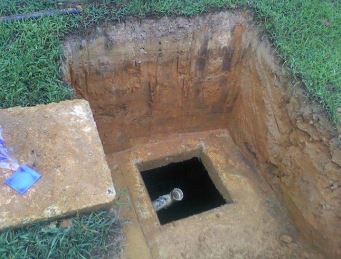
The septic tank is a buried, watertight container typically made of concrete. The function of the septic tank is to separate solids from the wastewater, break down and reduce the accumulated solids, and then pass the effluent or clarified wastewater out to the drainfield for further treatment. The sludge and scum layers are retained in the tank until the tank is pumped. There is an influent and effluent tee. The influent tee slows down the incoming rush of water to prevent the disturbance to the scum layer and reduce turbulence. The effluent tee keeps solids, scum, and grease from leaving the septic tank and entering the drainfield. The most common serious problem with septic systems occurs when the sludge and/or scum are carried out into the drainfield. There are two lids on top of the septic tank which are access points for septic inspections, pumping and maintenance.
Distribution Box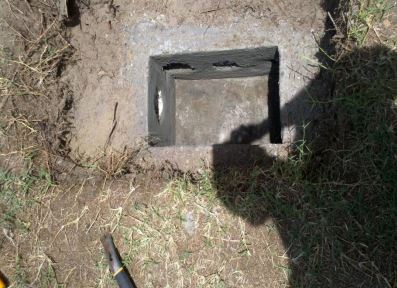
A distribution box is made of concrete or plastic that evenly splits the flow of effluent between drainfield trenches. All distribution boxes have one inlet and multiple outlets. The distribution box also has a lid that is removed for inspection. Ideally, the distribution box is installed in undisturbed ground and is perfectly level. Being level keeps the pipes inside the distribution box at the same elevation promoting equal distribution of wastewater to the drainfield lines.
Drainfield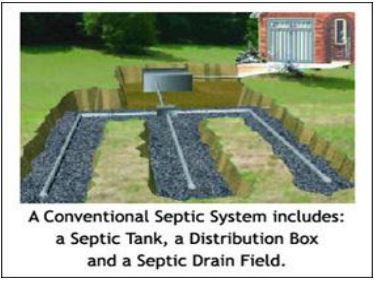
The design of the drainfield depends on the soil characteristics, amount of wastewater flow, ground slope, and depth of the groundwater and bedrock. The drainfield should be located as far as possible from drinking water wells, streams, lakes, steep hillsides, road-cuts, and property lines. The drainfield consists of several narrow, shallow, gravel-filled trenches with a perforated pipe near the top of the gravel to distribute wastewater throughout the length of the trench. The clarified effluent from the septic tank flows to the drainfield. During this process, the effluent is discharged below the ground into the soil for final treatment and disposal.
Effluent Forced Maintenance Filter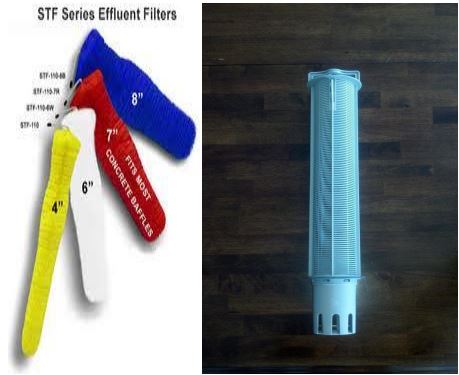
A septic tank can only settle out and retain a percentage of the solids from your home. The other portion breaks down into suspended solids (particles) and gets carried out through the effluent tee to the drainfield.
Having an effluent filter installed adds extra protection and extends the probable life of the drainfield. This device filters solid materials from the effluent while sustaining adequate flow to the drainfield.
Septic Tank Pumping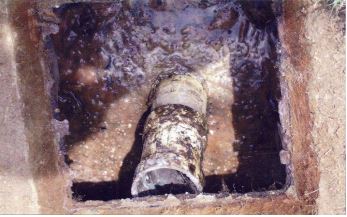
Septic system pumping and inspection are vital to the life of a septic system. Virginia Department of Health recommends that a septic tank be pumped every 3 to 5 years. Four major factors influence the frequency of pumping: the number of people in the household, the amount of wastewater generated (based on the number of people in the household and the amount of water used), the volume of solids in the wastewater and the septic tank size.
Failure to regularly pump out the septic tank is one of the primary causes of system failure. Typical pollutants of household wastewater are nitrogen, phosphorus, and diseasecausing bacteria and viruses. If a septic system is working properly, it will effectively remove most of these pollutants.
Another very important reason to have your septic tank pumped out regularly is to prevent the spread of infection and disease and protecting water resources. Inadequately treated sewage from a septic system can be a cause of groundwater contamination. It poses a significant threat to drinking water.
A properly maintained septic system will function for several decades.
What Can Make A System Fail
If the amount of wastewater entering the system is more than the system can handle, the wastewater backs up into the house or yard and creates a health hazard.
You can suspect a system failure not only when a foul odor is emitted but also when you hear gurgling sounds in the drains, when water drains slowly or when partially treated wastewater flows up to the ground surface. By the time you can smell or see a problem, the damage might already be done.
A system installed in unsuitable soils can also fail. Other failure risks include tanks that are inaccessible for maintenance, drainfields that are paved or parked on, tree roots or defective components that interfere with the treatment process, and leaky plumbing fixtures such as faucets and toilets. A leaky toilet where the flapper is no longer holding its seal will cause the septic tank to get above proper operating level and flood the drainfield.
By limiting your water use, you can reduce the amount of wastewater your system must treat. When you have your system inspected and pumped as needed, you reduce the chance of system failure.
"Thank you so much for helping my mom out, answering all my questions, and for keeping me informed. Very much appreciative."












 Made in the U.S.A.
Made in the U.S.A.